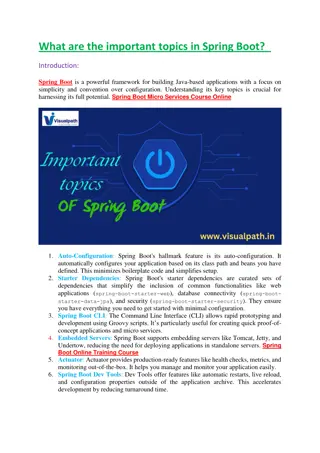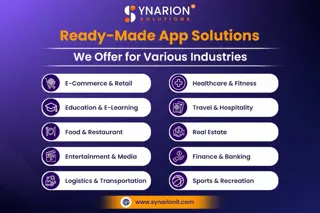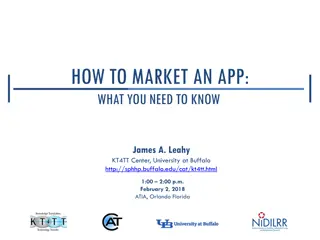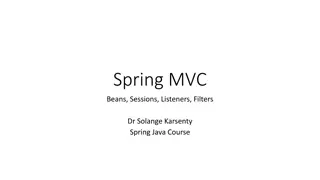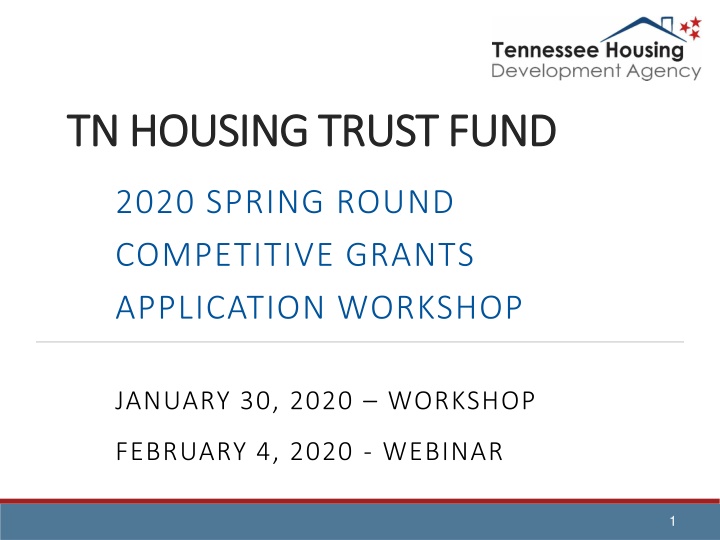
TN Housing Trust Fund 2020 Spring Round Grant Application Details
"Learn about the TN Housing Trust Fund's 2020 Spring Round competitive grants program offering up to $500,000 for Rental Only activities. Key dates, eligibility criteria, and application requirements outlined. Nonprofits and eligible agencies can seize this funding opportunity."
Download Presentation

Please find below an Image/Link to download the presentation.
The content on the website is provided AS IS for your information and personal use only. It may not be sold, licensed, or shared on other websites without obtaining consent from the author. If you encounter any issues during the download, it is possible that the publisher has removed the file from their server.
You are allowed to download the files provided on this website for personal or commercial use, subject to the condition that they are used lawfully. All files are the property of their respective owners.
The content on the website is provided AS IS for your information and personal use only. It may not be sold, licensed, or shared on other websites without obtaining consent from the author.
E N D
Presentation Transcript
TN HOUSING TRUST FUND TN HOUSING TRUST FUND 2020 SPRING ROUND COMPETITIVE GRANTS APPLICATION WORKSHOP JANUARY 30, 2020 WORKSHOP FEBRUARY 4, 2020 - WEBINAR 1
SPRING ROUND HIGHLIGHTS The amount available for the Spring Round is approximately $1.8 million. Eligible activities are Rental Only. The maximum grant is $500,000. Income limits are at or below 80% AMI. 2
SPRING ROUND HIGHLIGHTS Applications are due Thursday, March 19, 2020 by 4:00 pm CDT. Funding announcements by June 1, 2020. Contract term: July 1, 2020 through June 30, 2023. 3
SPRING ROUND HIGHLIGHTS Applicants with projects that are or will be ready to begin soon will be viewed more favorably. Nonprofits must submit organizational documents through THDA s online tool: Participant Information Management System (PIMS). (Note: Certificate of Existence is no longer required to be submitted through PIMS). All applicants must submit the most recent Financial Audit through PIMS. All Competitive Grants assisted units must be listed on TNHousingSearch.org. There is no cure period. Submission of a complete application is a threshold criterion. 4
DRAW DOWN REQUIREMENTS Applicants with current Competitive Grants must meet draw down requirements by March 12, 2020 to be eligible. Grant Year Draw Requirement 2018 Fall and Earlier 100% 2018 Spring 75% 2019 Fall 50% 2019 Spring 25% 2020 Fall Not Eligible 5
ELIGIBLE APPLICANTS Local Governments Development Districts Public Housing Authorities Departments of State Government Non-profit Organizations 6
ELIGIBLE NON-PROFIT AGENCIES Organized under Tennessee law or the laws of another state with a current Certificate of Existence and current Certificate of Authorization to do business in TN. Have as one of its purposes the provision of housing to low- income households. Two years of experience in providing affordable housing assistance in TN. Have standards of financial accountability. Have IRS 501(c)(3) or 501 (c)(4) designation. Additional requirements as noted in Attachment One: Non- Profit Checklist. 7
ELIGIBLE NON-PROFIT AGENCIES The applicant must be the owner of the proposed rental project, however, for projects involving Low Income Housing Tax Credits: The applicant must be the sole general partner, or The sole managing member of the ownership entity, or Own 100% of the stock of a corporate ownership entity. 8
ELIGIBLE ACTIVITIES Rental housing programs only!! Homeownership is not an eligible activity. 9
ELIGIBLE ACTIVITIES New construction of rental units. Acquisition of rental units. Rehabilitation of rental units. Conversion of non-residential space to residential units. Combinations of the above. 10
HOUSING FOR INDIVIDUALS WITH DISABILITIES Housing for individuals with disabilities is rental housing for persons with a physical, emotional, or mental disability. Housing for persons with disabilities must adhere to the qualities of settings eligible for reimbursement under Medicaid home and community based services as established by the Centers for Medicare and Medicaid Services (CMS) as follows: Integrated setting with full access to the greater community. Is selected by the individual from among setting options. Ensure individual rights of privacy, dignity, respect, and freedom from coercion and restraint. Optimize autonomy and independence in making life choices. Facilitate choice regarding services and who provides them. 11
HOUSING FOR INDIVIDUALS WITH DISABILITIES Housing for individuals with disabilities should also adhere to the following if the housing is owned by the sponsor: Lease or other legally enforceable agreement with similar protections. Privacy including lockable doors, choice of roommates, and freedom to furnish or decorate. Control of the individual s own schedule. Access to food at any time. Visitors at any time. Setting is physically accessible. 12
ELIGIBLE RENTAL POPULATIONS Rental households must serve tenants with gross annual incomes at or below 80% of area median income. Tenants may also be elderly (age 62 or over) and/or have a disability. 13
ELIGIBLE RENTAL POPULATIONS Preferences will be provided for projects serving the following populations: Youth transitioning out of the State s foster care system (age 18-24). Ex- offenders, particularly elderly ex-offenders. Homeless veterans. 25% set aside for extremely low income households (0 30% AMI). 50% set aside for very low income households (0 50% AMI). 14
ELIGIBLE RENTAL POPULATIONS Point determination for priority populations: For youth, homeless veterans, & ex-offender projects, points will be based on the proportion of units set aside. If 100% of units are set aside on any size project, full points will be awarded. On projects involving 10 or more units, if 10 or more units are set aside, full points will be awarded. If less than 10 units are set aside, points will be awarded on a proportional basis. 15
ELIGIBLE RENTAL POPULATIONS The provision of supportive services is required for projects serving: Youth transitioning out of the foster care system. Ex-offenders. Individuals with disabilities. The provision of supportive services is encouraged for projects targeting: Homeless veterans. 16
ELIGIBLE RENTAL POPULATIONS Homeless Veterans To be eligible for assistance an individual or family must meet HUD s definition of homeless and the head of household or spouse must meet the U.S. Interagency Council on Homelessness definition of a Veteran . HUD s Homeless definition has 4 categories: 1. Literally homeless individuals/families. 2. Individuals or families who will imminently (within 14 days) lose their primary nighttime residence with no subsequent residence, resources, or support networks. 17
ELIGIBLE RENTAL POPULATIONS Homeless Veterans 3. Unaccompanied youth or families with children/youth who meet the homeless definition under another federal statute and 3 additional criteria including those who: Have not had a lease, ownership interest, or occupancy agreement 60 days immediately prior to the date of application for homeless assistance. Have experienced persistent instability with two or more moves 60 days immediately prior to the date of application for homeless assistance. Can be expected to continue in such status for an extended period due to chronic disabilities, physical or mental health conditions, substance addiction, histories of domestic violence or childhood abuse or neglect, the presence of a child or youth with a disability or two or more barriers to employment. 4. Individuals/families fleeing or attempting to flee domestic violence with no subsequent residence, resources, or support networks. 18
ELIGIBLE RENTAL POPULATIONS Homeless Veterans The U.S. Interagency Council on Homelessness defines a Veteran as the following: An adult who served on active duty in the armed forces of the United States, including persons who served on active duty from the military reserves or the National Guard. 19
INELIGIBLE ACTIVITIES Pledge THTF funds as support for tax exempt borrowing by local grantees. Provide off-site improvements, neighborhood infrastructure, or public facility improvements. Pay administrative expenses of local governments. Provide assistance to private for-profit owners of rental property. Homeowner rehabilitation projects. 20
INELIGIBLE ACTIVITIES Homeownership activities including down-payment assistance and the development of units for sale. Rental Housing that is treatment, hospice, nursing home, or a convalescent facility. Operating Reserves. Developer Fees. Costs incurred prior to the THTF contract start date July 1, 2020. 21
MATCH Eligible Sources Proposals must include a 50% match for development dollars. Administrative funds are not required to be matched. Eligible sources of match include: Grants from other agencies. Federal sources such as CDBG or USDA Rural Development. Non-THDA HOME funds. Cash contributions from local churches, agencies, or individuals. Bank loans. A funding pool established by a local lender for the applicant. 22
MATCH Eligible Sources Rental assistance dedicated to a project for the term of the rental assistance contract. Supportive services provided for projects serving those with special needs including persons with disabilities, homeless veterans, ex-offenders, the elderly, or youth transitioning out of the foster care system. The value of property already owned by the applicant upon which the proposed housing will be rehabilitated or constructed. HOME grants from local participating jurisdictions. 23
MATCH Ineligible Sources THDA HOME grants or other THDA program funds. In-kind donations, services, or labor. 24
INCOME LIMITS Competitive Grants Program uses the income limits established by the U.S. Department of Housing and Urban Development for the HOME program; and Household income as defined by the Section 8 Rental Assistance Program. - See Attachment Three: Income Limits 26
CRIMINAL BACKGROUND The Competitive Grants Program will follow HUD regulations with regard to the provision of housing for ex-offenders. Housing assistance is prohibited to the following: Ex-offenders who have been evicted from federally-assisted housing for drug related criminal activity with an effective date of eviction within the last three year period. An ex-offender household that includes a member who has ever been convicted of drug related criminal activity involving the manufacturing or production of methamphetamines on the premises of federally-assisted housing. An ex-offender household that includes a member who is subject to a lifetime registration requirement under a state sex-offender registry program. 27
COMPLIANCE PERIOD New construction projects: Compliance period begins on the date of the issuance of the certificate of occupancy for the final building placed in service. Rehabilitation projects where a certificate of occupancy is not issued: Compliance period begins on the date of recordation of the notice of completion. The grant is forgiven at the end of the compliance period if full compliance was achieved during the term. 28
COMPLIANCE PERIOD The Compliance period is secured by a: Grant Note Deed of Trust Restrictive Covenants The Competitive Grants legal documents must be in place before grant funds may be drawn down. 29
COMPLIANCE PERIOD The length of the compliance period will be based on the amount of Competitive Grants funds invested per unit as follows: Average Per Unit Competitive Grant Investment Compliance Period < $15,000 5 Years $15,000 - $40,000 10 Years >$40,000 15 Years 30
CONSTRUCTION STANDARDS Rental units constructed or rehabilitated with Competitive Grants funds must meet the following as applicable: THDA Design Standards. Minimum standards that apply to new construction and rehabilitation of all single family & multifamily units. All local codes, rehabilitation standards and zoning ordinances at project completion. In the absence of local codes, the units must meet the current State approved edition of the applicable International Code. 31
CONSTRUCTION STANDARDS Newly constructed units must also meet the current edition of the International Energy Conservation Code. Additional points will be awarded for projects incorporating accessibility or universal design features. 32
PROPERTY STANDARDS Rental units must, at a minimum, continue to meet Section 8 Housing Quality Standards on an annual basis throughout the Compliance Period. 33
INSPECTIONS All rehabilitation or new construction work must be inspected by a licensed inspector based on the rules applicable for the local jurisdiction where the units are located. Licensed codes inspectors are certified by the TN Dept. of Commerce and Insurance State Fire Marshal s Office. If a construction permit is issued by a local jurisdiction, inspection by a state certified inspector of that jurisdiction is required. 34
INSPECTIONS If a permit is not required by the State or local jurisdiction, then the inspection may be conducted by a qualified inspector with one of the following credentials: State of TN Building, Mechanical, Electrical or Plumbing inspector as appropriate for the work performed Individuals certified by a national organization such as: International Code Council National Fire Protection Association Standard Building Code Congress Other qualifications as approved by THDA 35
RENT LIMITS Maximum rents are the High HOME rents. - See Attachment Four: HOME Rents Property owners are encouraged to charge tenants no more than 30% of their gross monthly income as rent. The published rents include utilities. The cost of utilities paid by tenants must be subtracted from the published rent to determine the maximum allowable rent. 36
RENT LIMITS GROUP HOMES The Rent limit for Group Homes is the HUD Fair Market Rent (FMR) limit for the total number of bedrooms in the group home. Bedrooms of live-in supportive service staff are not included in the calculation of total number of bedrooms. Each tenant pays a pro-rata share of the total rent. If tenants are paying utilities, the utility allowance must be subtracted from the FMR limit to determine the max combined rent that may be charged to all tenants. Rents may not include food or supportive services costs. 37
RENT LIMITS GROUP HOMES Services and fees for persons with disabilities must adhere to the following: Disability related services must be non-mandatory. Persons with disabilities must have the option to choose service providers. Leases must state whether fee-based services are optional or mandatory. Leases must identify the amount of additional fees separately from the basic rent for each tenant. 38
RENT LIMITS GROUP HOMES Group Home Rent Calculation Example: The pro-rata share is calculated by dividing the FMR by thenumber of persons in the group home. Number of persons residing in the group home: 3 Number of bedrooms: 4 (1 bedroom is occupied by a live-in service provider) Number of bedrooms used to establish rent: 3 Fair Market Rent: $990, Utility Allowance: $90, Max Total Rent: $900 $900/3 persons = $300 Max rent per person $300/$900 = .33 each person s pro-rata share 39
RENT LIMITS SRO UNITS Rents for Single Room Occupancy units are based on the HUD Fair Market Rents or the HUD High HOME rent depending on the type of unit as described below: IF THE SRO HOUSING IS . THEN A unit with neither food preparation nor sanitary facilities, or with one (food preparation or sanitary facilities) The THTF rent may not exceed 75% of the HUD-published FMR limit for a 0-bedroom (efficiency) unit. The THTF rent cannot exceed the HUD published High HOME rent limit for a 0- bedroom unit. A unit with both food preparation and sanitary facilities The THTF rent can be the applicable state or Federal project-based rent, as long as it is occupied by a very low income tenant who does not pay more than 30% of the family s monthly adjusted income for rent. A unit that receives state or Federal project-based rental assistance and is occupied by a very low income tenant 40
ON-GOING OBLIGATIONS FOR RENTAL PROJECTS Initial and annual income certification of each tenant. Adherence to THTF Competitive Grant rent limits. Compliance with Section 8 Housing Quality Standards. Reporting to THDA. 41
PROCUREMENT Solicitation of bids for goods, materials, services and/or equipment must be open and competitive. Local governments and non-profit organizations must follow their procurement policies. At a minimum, there must be an established procedure and written rationale for selecting the successful bid or proposal. Grantees are expected to obtain at least three bids. Purchase should be made from the lowest or best bidder. 42
FAIR HOUSING AND EQUAL OPPORTUNITY Successful applicants must comply with both state and federal laws with regard to fair housing and equal opportunity. No person can be excluded from Competitive Grants units on the basis of race, color, national origin, religion, disability, familial status, or sex. 43
FAIR HOUSING AND EQUAL OPPORTUNITY Efforts should be made to assure minority- and female-owned businesses are offered opportunities to bid on service, material and construction contracts. Grantees must have procedures to provide information and to attract eligible tenants without regard to race, color, national origin, religion, disability, familial status, or sex. 44
MARKETING Successful applicants must develop marketing plans to accentuate the achievements of the TN HTF Competitive Grants Program. Grantees will be required to submit data and beneficiary stories to THDA. 45
SUBMISSION INSTRUCTIONS One original application with supporting documentation. Non-profit organizations must upload basic organizational documentation to PIMS. Organizational Documents not uploaded to PIMS will not be considered. No faxed or e-mailed applications. No binders or folders. No cover page is necessary. No staples. Binder clips are the best. 47
PIMS Note the following as it relates to uploading documents to PIMS: All documents uploaded to PIMS must be in a .pdf format. Applicants are responsible to ensure that electronic documents are correct in both format and content. Applicants will receive a confirmation email documenting satisfactory upload. The Documents section of PIMS is the only functionality being used at this time. Applicants are not required to enter information under the Threshold & Self Certification Sections. 48
ALL APPLICANTS Complete the entire application. Answer all questions. Mark NA if not applicable to your project. Applications must be typed and printed on one side only. Include Attachment Two: Rental Housing Feasibility Worksheet. 49
ALL APPLICANTS Include current Board Resolution approving submission of the 2020 Spring THTF Competitive Grants application. Upload most recent audit or audited financial statements, as applicable, to PIMS. If the project includes Low Income Housing Tax Credits, include a copy of the organizational chart. 50





